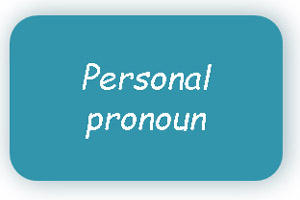Personal pronouns examples:
Personal pronouns, those unsung heroes of language, quietly hold the power to streamline and clarify your writing. But choosing the right one can be trickier than it seems! Fear not, word warriors, because this article equips you with examples to conquer the world of personal pronouns.
The personal pronoun has three groups:
Let’s start with the core players: me, you, and they. These pronouns represent the speaker (you!), the listener (me!), and anyone else involved (them!). Simple enough, right? But wait, there’s more!
first-person-speaking person. I.Me
second-person: The person has spoken to. You (singular and plural forms both)
Third Person: He, She, It (Singular), They, Them (Plural)
- Singular vs. plural: Be mindful of numbers! “I” and “you” are singular, referring to one person each, while “we” and “they” are plural, representing multiple individuals.“I” always starts with a capital.
- Formal vs. Informal: “You” can be formal (“May I help you?”) or informal (“Hey you, what’s up?”). Choose wisely, depending on the context.
Possessive Pronouns
Beyond the basic pronouns, we have their possessive counterparts, claiming ownership: mine, yours, and theirs. These handy words eliminate the need for repetitive phrases: instead of “The book is mine,” use “It’s my book.”
Object Pronouns:
When pronouns become the object of a sentence, they transform: “He gave it to me” (not “to I”). Remember: “me,” “him,” “her,” “us,” and “them” are used as objects, not subjects.
Reflexive Pronouns:
These pronouns refer back to the subject, emphasizing actions: “I brushed myself off.” “Myself,” “herself,” “themselves,” and so on, create a sense of self-directed action.
Examples:
Now, let’s see the pronouns in action!
- Formal: “We believe your proposal is impressive.” (Subject + possessive + object)
- Informal: “Hey, grab your coat. Let’s go!” (Object + possessive + subject)
- Reflexive: “He built himself a new desk.” (Subject + reflexive)
Choosing the right pronoun depends on context, formality, and grammatical role.
With a little practice, you’ll be wielding pronouns like a pro, crafting clear, concise, and engaging writing. So, step into the spotlight and unleash the power of personal pronouns.
Examples.
a) She sent flowers to her relative.
b) who won the cricket match yesterday.
c) Whose automobile was washed?
d) What is the reason he changed the institution?
e) To whom has Sara given the books?
It shows gender, masculine, feminine, and neutral gender. He, She, I,
You, it, we, and they are called personal pronouns, they are used as substitutes for proper nouns.
Personal pronouns list:
| Subject Pronoun | Singular | Plural |
| I | We | |
| You | You | |
| He, She, It | They | |
| Object Pronoun | Me | Us |
| You | You | |
| Him.Her, It | Them |

